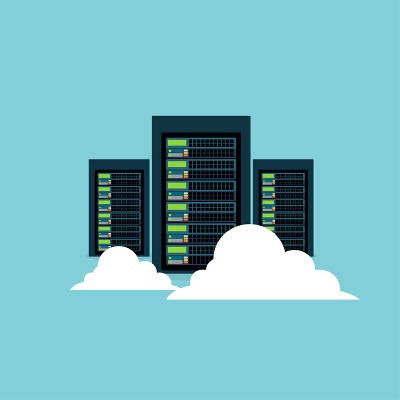The sad truth about computers is that when they inevitably break, you have to get them fixed; or, you have to order a new one. When PCs started to be utilized for mass productivity, however, businesses had to find a better way. It’s been years since the first managed services provider hung out their shingle, and over that relatively short time the managed services industry has grown to be a $150 billion-a-year industry. The combination of IT becoming an important part of nearly every business resulted in the obvious demand for affordable IT support. This trend has seen many businesses cutting IT staff to make way for outsourced managed services, and all it provides. A problem that both businesses, and the MSPs that they hire, face is that computers eventually break.
For years now businesses have had to set aside capital to fix and replace their information systems; capital that could be better served invested elsewhere. Managed services tries to put a flat rate on every piece of IT you need managed and comes up with a consistent billable figure that not only allows a business to plan their operational IT budget more accurately, but allows them access to the expertise they may have lacked without a dedicated IT administrator. MSPs form of proactive maintenance can go a long way toward providing the kind of longevity that any organization would want from their hardware; but, while we can do a lot to protect your systems from failure, there’s no way to definitively know when a piece of hardware is going to fail.
When technology breaks, it leaves a hole in your functioning business that has a cost attached to it. If it's a switch or a router, or even a workstation that needs to be replaced, it’s cheap enough. The cost to replace an in-house enterprise server, however, is between $5,000 and $20,000 dollars. Couple that with the fact that hardware prices that had been dropping for a decade have begun to rise, it suggests that it won’t be getting cheaper to replace a physical server unit anytime soon. At Telesys IT Services, we like to think of ourselves as solution providers, and today there are more options than ever for the housing, management, and maintenance of an organization’s computing infrastructure, including storage and applications.
When your server is about to fail, and you need a new one, buying a new one has to be a no-brainer. So how do you go about it? How do you get the data from the old hardware to the new hardware? What about networking? With so many factors to consider, relying on the experts is a must. If you have in-house technology professionals, they probably have this process worked out as to not cause the business a lot of additional problems. After all, a failed server carries with it enough anxiety without the additional fear that goes with not being able to do the work that is required to sustain profitability. But, if you don’t have dedicated IT personnel on staff, the process might get a little overwhelming.
Let’s assume that (for this example) your organization’s file server is about to fail and you don’t have any contingency in place. What variables do you need to consider?
- Are you backed up?
- Do you have failover?
- In-house or Cloud
- Migration plan: RTO & RPO
- Functionality and Security
Are You Backed Up?
Has your organization put in place a backup function? Before we start in on a new server, every business should be utilizing a comprehensive backup and recovery system. Not only do you protect your data (one of the most lucrative assets your business has), but it also gives you failover options that many organizations might not have. Our Backup and Disaster Recovery system features incremental backups and the ability to use the device as a failover server, so your business isn’t dealing with sustained downtime while you replace or repair your server.
Do You Have Failover?
A failover system is a system in place that allows you to protect your organization from system failure. By having a system to continue to access critical data, you can keep business moving while you replace or repair vital hardware. As stated above, our BDR gives temporary failover server capabilities to ensure the smoothest transition you can expect.
In-House or Cloud?
The big decision many businesses have to make nowadays is where to host your server. There are pros and cons to moving your infrastructure to the cloud, as today a well-designed-and-implemented cloud server is often more beneficial depending on the needs of your organization. The average business has multiple servers, so when one is on the verge of failure (or fails outright) and you are forced to use your failover platform as a temporary server, considering a move that will allow you to manage to get the server up and running again efficiently has to be a consideration. There are many cloud-hosted options to consider. Performing the cloud vs in-house determination. When your hardware gets old (or your software is), you have to start to consider your options. Let’s look at some variables you should be cognizant of when deciding whether or not to move your computing infrastructure offsite.
In-House Computing - The traditional method of computing, some would argue, is tried and true. You purchase the hardware outright, you license the software you need, you equip it with the storage you need, and you manage and maintain it in house. The server unit itself is a big expense, but most small to medium-sized businesses could justify the purchase if it was between losing data and continuing efficient production. You have to ascertain what the costs are and see if a new onsite server is cost effective for you.
Cloud Computing - If your computing infrastructure needs to be replenished, there are several great cloud-hosted computing options your business could consider. From affordable public cloud solutions to resource and capital intensive private cloud solutions, the cloud has options for any business that needs to upgrade their computing infrastructure. The cloud also helps organizations that want to put an emphasis on remote work and collaboration.
Migration Plan: RTO & RPO
When migrating data onto a new server from backup, you need to understand the costs of doing so. That’s why disaster recovery experts have defined the necessary metrics you need to understand when recovering data after a server failure (or any major data loss incident). They are Recovery Time Objective (RTO) and Recovery Point Objective. (RPO). In the context of data recovery, the RTO is a measurement of the amount of time your business can go without storage or applications while they are restored, while the RPO is a measure of how far back data recovery needs to go to get your organization up and running efficiently. Typically the two values work against each other, so determining how much data you need and how fast you’ll need it by to keep your company functional becomes extremely important.
New and Old, Side-By-Side
Once you have your new computers up and running with all the software and appliances configured, make sure to leave your old system up (if possible), even if a hardware failure is imminent. This will allow you the time to ensure that your new server is working optimally when it matters most. After you’ve ironed out all the kinks, you then can shut down and recycle your old server.
There are many more tips and tricks we can give you to ensure that in replacing your old technology, you are getting powerful, effective, and reliable upgrades. For more information about proactive managed services that can tell you if it’s time to refresh your hardware, call the IT professionals at Telesys IT Services today at (817) 590-9339.





























